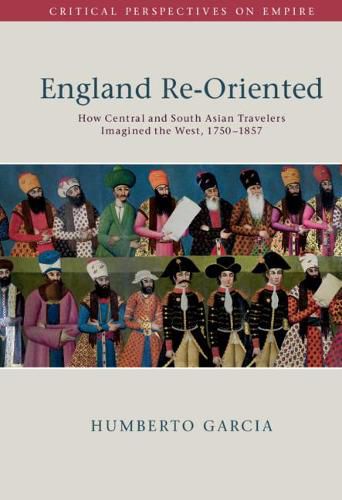Readings Newsletter
Become a Readings Member to make your shopping experience even easier.
Sign in or sign up for free!
You’re not far away from qualifying for FREE standard shipping within Australia
You’ve qualified for FREE standard shipping within Australia
The cart is loading…






What does the love between British imperialists and their Asian male partners reveal about orientalism’s social origins? To answer this question, Humberto Garcia focuses on westward-bound Central and South Asian travel writers who have long been forgotten or dismissed by scholars. This bias has obscured how Joseph Emin, Sake Dean Mahomet, Shaykh I'tesamuddin, Abu Talib Khan, Abul Hassan Khan, Yusuf Khan Kambalposh, and Lutfullah Khan found in their conviviality with Englishwomen and men a strategy for inhabiting a critical agency that appropriated various media to make Europe commensurate with Asia. Drama, dance, masquerades, visual art, museum exhibits, music, postal letters, and newsprint inspired these genteel men to recalibrate Persianate ways of behaving and knowing. Their cosmopolitanisms offer a unique window on an enchanted third space between empires in which Europe was peripheral to Islamic Indo-Eurasia. Encrypted in their mediated homosocial intimacies is a queer history of orientalist mimic men under the spell of a powerful Persian manhood.
$9.00 standard shipping within Australia
FREE standard shipping within Australia for orders over $100.00
Express & International shipping calculated at checkout
What does the love between British imperialists and their Asian male partners reveal about orientalism’s social origins? To answer this question, Humberto Garcia focuses on westward-bound Central and South Asian travel writers who have long been forgotten or dismissed by scholars. This bias has obscured how Joseph Emin, Sake Dean Mahomet, Shaykh I'tesamuddin, Abu Talib Khan, Abul Hassan Khan, Yusuf Khan Kambalposh, and Lutfullah Khan found in their conviviality with Englishwomen and men a strategy for inhabiting a critical agency that appropriated various media to make Europe commensurate with Asia. Drama, dance, masquerades, visual art, museum exhibits, music, postal letters, and newsprint inspired these genteel men to recalibrate Persianate ways of behaving and knowing. Their cosmopolitanisms offer a unique window on an enchanted third space between empires in which Europe was peripheral to Islamic Indo-Eurasia. Encrypted in their mediated homosocial intimacies is a queer history of orientalist mimic men under the spell of a powerful Persian manhood.